S-2 medium range ballistic missile (France)
The decision to create land-based missile systems appeared in February 1962 of the year. Its appearance was connected with the desire of the official Paris to create all the necessary components of the nuclear forces and get rid of the existing dependence on third countries. In addition, an additional incentive was the inhibition of work on the subject of ballistic missiles of submarines. According to the 1962 plan of the year, the first military bases with mine launchers for medium-range missiles were to appear in France at the beginning of the seventies. The number of deployed missiles on duty should have exceeded fifty. The ground-based strategic missile forces were to obey the command of the air force.
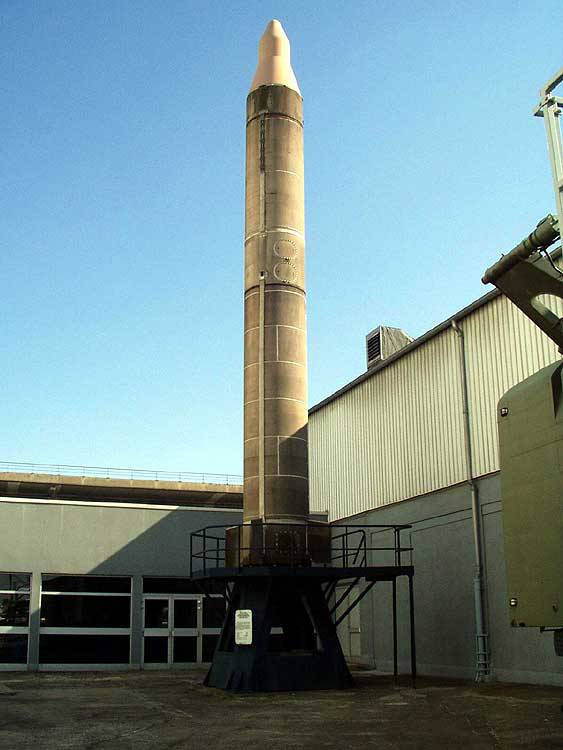
One of the surviving museum samples MRSD S-2. Photo Rbase.new-factoria.ru
By the early sixties, French scientists and designers had time to accumulate some experience in the creation and operation of missiles of various classes. In particular, there were already some developments on the subject of ballistic missiles of short and medium range. The existing ideas and solutions were planned to be used in the development of a new project. At the same time, it was necessary to create and develop some new concepts, technologies, etc. Due to the high complexity, leading industrial enterprises were involved in the work. Société nationale industrielle aérospatiale (later Aérospatiale) was appointed the lead developer. Also involved in the project were Nord Aviation, Sud Aviation and other organizations.
The French industry already had some experience in the creation of missiles, but the development of the draft high-grade combat complex was associated with noticeable difficulties. Because of this, it was decided to form the overall look of the rocket and the systems necessary for it, and then test these ideas with the help of prototype demonstrators of the technology. The first version of an experienced rocket, intended for certain checks, received the symbol S-112.
Work on the S-112 project continued until the 1966 year. After the completion of development, the industry produced a prototype of such a rocket. Especially for testing new weapons was built ground Biskarus, equipped with a silo launcher. It is noteworthy that this test site subsequently underwent several upgrades, due to which it is still used. In 1966, the first test launch of the S-112 product was conducted at the test site. This was the first launch of a French rocket from a mine installation.
S-112 was the implementation of the ideas that underlay the entire program of creating the new MRBD. It was a two-stage ballistic missile with solid-fuel engines. The length of the product was 12,5 m, diameter - 1,5 m. The starting weight reached 25 t. An autonomous control system was used, which monitors the preservation of the required course. An experienced rocket was launched from a special mine with a launch pad. Used so-called. gasdynamic start with the abandoning of the launcher due to the thrust of the main engine.
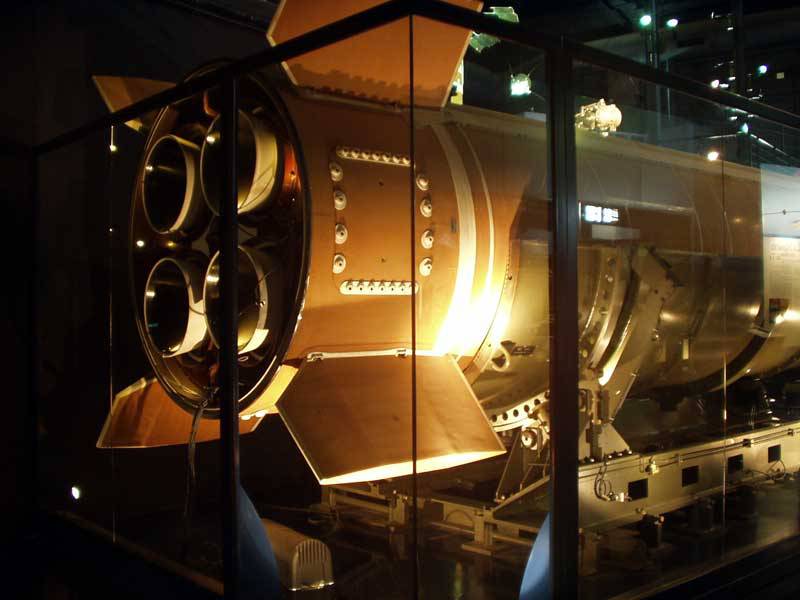
The tail of the first stage. Photo Rbase.new-factoria.ru
According to the test results of the S-112 rocket, the French industry presented an updated draft of a promising weapon. In 1967, the S-01 rocket came out for testing. In terms of size and mass, it hardly differed from its predecessor, but more sophisticated equipment was used in its design. In addition, there were noticeable improvements in the design, aimed at improving the technical and operational characteristics.
The S-01 rocket differed favorably from the S-112, but still could not suit the customer. For this reason, the design work was continued. By the end of 1968, the authors of the project presented a new version of the missile complex with the symbol S-02. In December, the first launch of an experimental S-02 rocket took place. Over the next few years, more 12 prototype rockets were used. As tests were carried out, the design was refined with the correction of the identified deficiencies and the improvement of the main characteristics. In the later stages of testing, the S-02 project was renamed to S-2. It was under this name that the rocket was put into service and put into mass production.
To fulfill the requirements, it was proposed to build a rocket according to a two-step scheme and equip it with solid-fuel engines. All this accordingly affected the design of the main components of the product. The S-02 / S-2 rocket was a product of total length 14,8 m with a cylindrical body of high elongation. The head fairing of the rocket, which served as the body of the warhead, received a complex shape formed by two conical and one cylindrical surface. In the tail of the first stage there were aerodynamic stabilizers.
The bodies of both stages, which also served as the bodies of the engines, were made of lightweight and heat-resistant steel alloy. Wall thickness varied from 8 to 18 mm. Outside, the case carried an additional coating protecting it from the effects of hot gases at the start. Also, this coating was supposed to improve the defense against the damaging factors of the enemy’s nuclear weapons used against the mine installation with the S-2 rocket.
The first stage of the rocket, which had its own designation SEP 902, was a cylindrical block with a diameter of 1,5 m and a length of 6,9 m. At the tail end of the body were fixed aerodynamic stabilizers. The tail bottom had holes for the installation of four nozzles. The own weight of the first stage design was 2,7 t. Most of the internal space was filled with a charge of solid fuel of the Izolan 29 / 9 type with 16 t mass. The charge was made by casting and sealed to the engine block. The P16 solid-fuel engine, which was part of the first stage design, had four conical nozzles made of a heat-resistant alloy. For control of roll, pitch and yaw nozzle could deviate from the original position on the commands of the guidance system. The 16-ton solid fuel charge allowed the engine to run for 77 seconds.
The second stage or SP 903 was similar to the SP 902 product, however, it was notable for its smaller size and other equipment, as well as the presence of the instrument compartment. With a diameter of 1,5 m, the second stage had a length of only 5,2 m. The design of the stage weighed 1 t, the charge for fuel was 10 t. The nozzle and the second stage control systems were similar to the one used at the first. There were also nozzles, used in the discharge of the warhead. 10 tons of fuel provided 53 with the P10 engine running. The cylindrical case of the instrument compartment was fastened to the head of the second stage, which contained all the necessary equipment for control in flight.
Between themselves, the two stages were connected using a special adapter, which included in its composition the power elements and the cylindrical lining. Separation of the steps was carried out using pre-pressurization of the interstage compartment and elongated pyrocharging. The latter was supposed to destroy the adapter, and the increased pressure facilitated this process, also simplifying the divergence of the separated stages.
The MRBM S-2 received an autonomous inertial guidance system standard for such a weapon of its time. A set of gyroscopes and special sensors located in the instrumental compartment of the second stage were to track the change in the position of the rocket, determining its trajectory. When removed from the desired trajectory, the computing device had to generate commands for the steering machines that control the rotation of the nozzles. The first-stage aerodynamic stabilizers were rigidly installed and were not used in the control system. Also, automation was responsible for the separation of steps at a given point in time and the discharge of the warhead. The control system worked only on the active part of the trajectory.
For the S-2 rocket, a special MR 31 combat unit was developed. She had a nuclear charge power 120 kt mass 700 kg. An undermining system was used to ensure the operation of the ammunition upon contact with the ground or at a given height. The warhead was placed in its own case of complex shape and was equipped with an ablative protection against thermal stress. The additional fairing covering the combat unit was not provided for in the project.
The S-2 rocket had a length of 14,8 m and a case diameter of 1,5 m. The span of the tail stabilizers reached 2,62 m. The starting weight was 31,9 t. The two-stage solid propellant engines allowed the detachable warhead to be sent up to 3000 km. The circular deviation was 1 km. During the flight, the rocket rose to an altitude of 600 km.
Especially for the new medium-range missile, a silo launcher was developed. This complex consisted of a reinforced concrete structure with a height of about 24 m. On the surface there were only a concrete platform of the shaft top and a movable lid with a thickness of 1,4 m and a weight of 140 t. For servicing the missile or launch complex, the lid could be opened hydraulically. For combat use for this was used powder pressure accumulator. The main node of the mine installation was a cylindrical channel to install the rocket. Also in the complex there was an elevator shaft and some other blocks. The design of the launcher gave a fairly high level of protection against the enemy’s nuclear strike.
In combat position, the rocket’s tail compartment rested on the launching table of the annular form. In its place, the table was held by a system of cables, blocks and hydraulic jacks that were responsible for its movement and alignment. The central part of the rocket was additionally supported by several ring assemblies, which also served as platforms for technicians to be placed in service. For access to the sites there were several passes connecting the central volume of the launcher with the elevator shaft.
When serial missile systems were deployed, the silo-launchers were built at a distance of about 400 meters from each other and connected to command posts. Each command post could control nine launchers with multiple redundant communications. To protect against the enemy's attack, the command post was at a great depth and had means of depreciation. The duty crew of two officers was to monitor the status of the missiles and control their launch.
It was proposed to store the S-2 missiles unassembled, each unit being in a separate airtight container. To store containers with steps and warheads, special underground warehouses should be built. Before putting the rocket on duty, containers with two steps should be sent to the assembly. Then a rocket without a head part was sent to the mine and loaded into it. Only after that it could be equipped with a combat unit, transported separately. Then the cover of the mine was closed, and the management passed to the officers on duty.
In accordance with the plans of the 1962 of the year, a new type of 54 MRBD should simultaneously be present on combat duty. Even before the completion of the development of the required weapons, it was decided to halve the number of deployed missiles. The reasons for the reduction of missiles to 27 units were difficulties with the simultaneous release of land and sea-based weapons. In addition, some economic difficulties began to appear, forcing to cut plans for the production of military equipment and weapons.
In the 1967 year, even before the S-02 rocket began testing, the construction of infrastructure and launchers for a new compound began, which was to exploit a promising weapon. Rocket connection was proposed to deploy on the Albion plateau. It was assumed that over the next few years 27 silo launchers would be built, grouped in three groups of nine units each. The installations of each group were to be controlled from its own command post. In addition, it was required to build warehouses for weapons storage, assembly shop and other necessary facilities. The new compound was deployed on the basis of the airbase of the d. Saint-Cristol. 2000 soldiers and officers had to work at the base. The compound was designated as the 05.200 brigade.
At the end of 1968, the program underwent another reduction. It was decided to abandon the third group, leaving only two with 18 launchers. In addition, at the same time there was an indication of the beginning of the development of a new medium-range missile, which in the foreseeable future was to replace the S-02 / S-2. In parallel with the construction of new facilities, the industry continued to test and fine-tune the rocket.
All necessary tests of the S-02 product were completed in the 1971 year, after which it was put into service under the name S-2. Also appeared an order for the supply of mass-produced missiles. In August of the same year, the first serial S-2 MRBTs were transferred to the troops. Soon they were put on duty. The first missiles of the second group were loaded into launchers in about a year. In September, 1973, the first tests of the serial rocket. It is noteworthy that the first combat training launch of the serial S-2 was carried out not at the missile base of the armed forces, but at the Biscaros test site.
Over the next few years, the missile compound, subordinate to the command of the Air Force, conducted five more training launches, during which work was done on receiving the order, and also the characteristics of the missiles were studied. In addition, duty crews of missile complexes every day, without weekends and holidays, were awaiting orders to use their weapons, ensuring the security of the country.
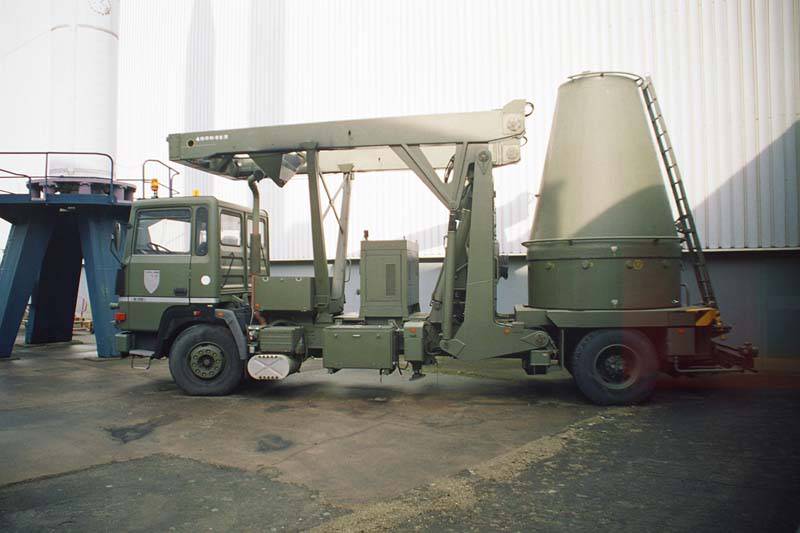
Conveyor warhead. Photo Capcomespace.net
Until the spring of 1978, the S-2 medium-range ballistic missiles remained the only weapon of their class in service with the land component of the French strategic nuclear forces. In April, 78-th one of the groups of the 05.200 brigade, located on the Albion plateau, began to receive the latest S-3 missiles. Complete replacement of old missiles continued until the summer of 1980. After that, in the old mine complexes there were only new type missiles. S-2 operation was discontinued due to obsolescence.
The total release of S-02 / S-2 rockets did not exceed a few dozen. For testing, 13 rockets were assembled. Another 18 product at a time could stand on duty. In addition, there was some stock of missiles and combat units, which were stored separately from each other. The MR 31 combat units were put into serial production in 1970 and were produced before 1980. During the tests and training launches, nearly two dozen missiles were used. Most of the remaining products were later disposed of as unnecessary. Only a few missiles lost nuclear warheads and solid fuel, after which they became museum exhibits.
MRSD S-2 was the first weapon of its class, created in France. For several years, missiles of this type were on duty and at any time could be used to strike at a potential enemy. Nevertheless, the S-2 project had some problems, which soon led to the development of a new rocket with improved characteristics. As a result, since the early eighties, the ground component of the French strategic nuclear forces has completely switched to the S-3 medium-range ballistic missiles.
On the materials of the sites:
http://rbase.new-factoria.ru/
http://capcomespace.net/
http://nuclearweaponarchive.org/
http://astronautix.com/
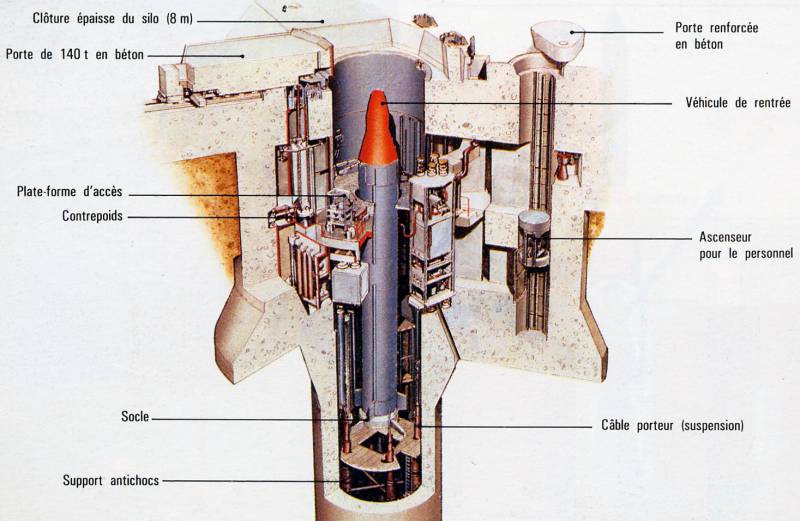
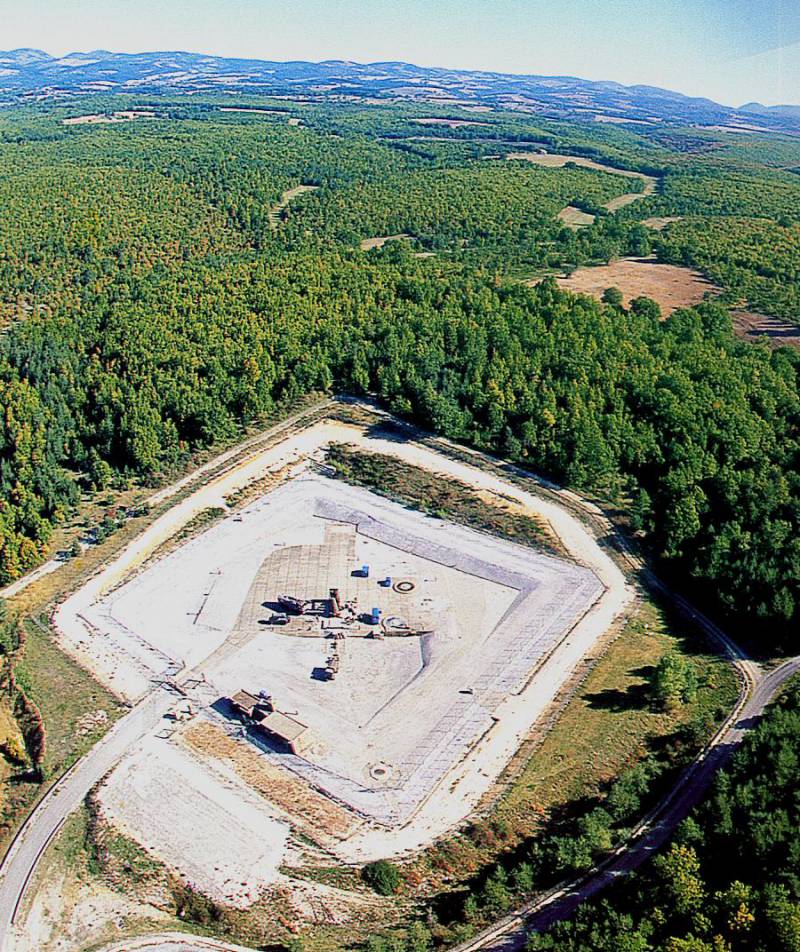
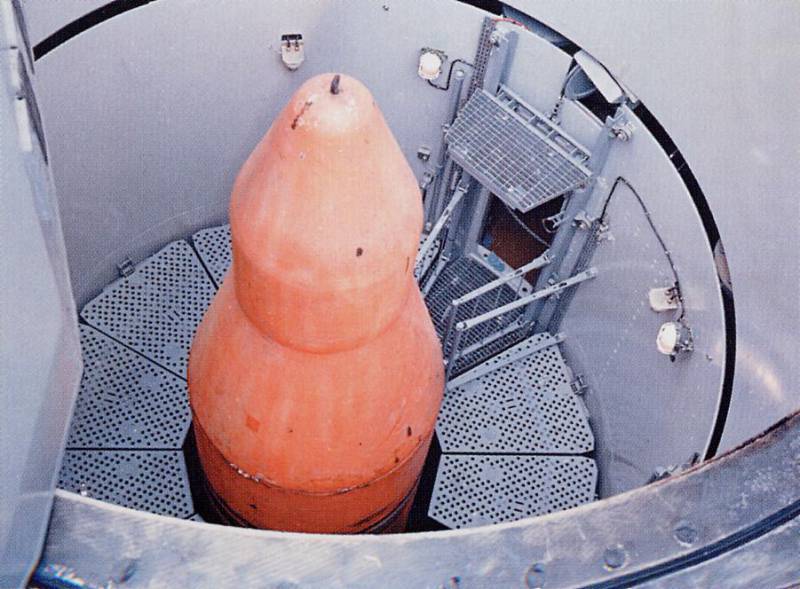
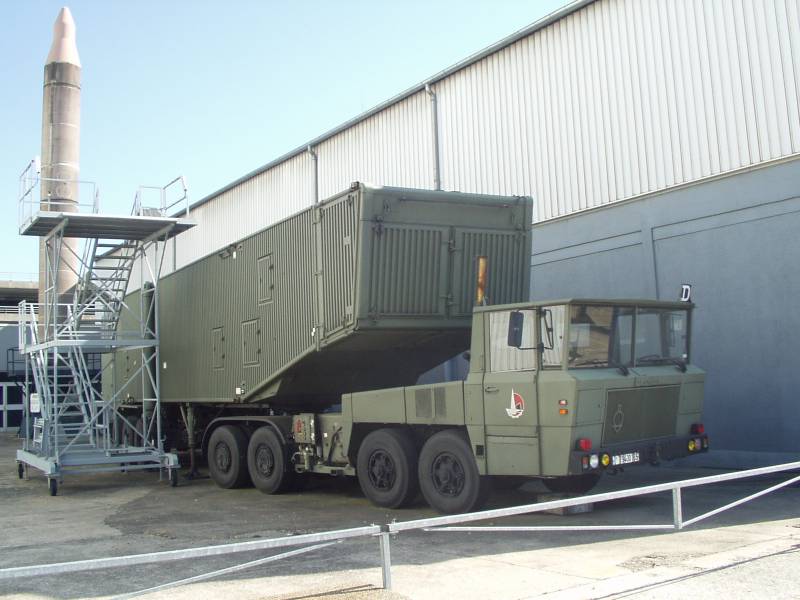
Information